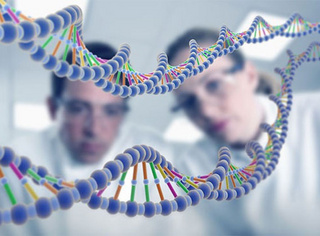NEWS
INDIETROIDENTIFICATION OF CHANGES IN ACUTE LEUKEMIA MYELOID BY METHODS OF NEXT- GENERATION SEQUENCING

During the last six months of the project continued the massive sequencing of the transcriptome of pediatric patients with acute myeloid leukemia with normal karyotype (NK - AML) .
The AML is a heterogeneous group of malignant diseases that originate from the clonal proliferation of blood cells called myeloid cells .
The disease affects about 65 children in Italy a year and is still burdened by a decidedly ominous prognosis . The disease-free survival , in fact, children affected by LAM is now around 55-60 % at 5 years . In particular, it is still difficult to characterize estrememente from the point of view of those prognostic LAM , gave normal karyotype , which have no biological marker molecules. The search for these biomarkers in that subgroup could not only help to better comprenedere the behavior of the disease but also to trace the prognostic profile and develop new targeted drugs . The massive sequencing of genomic material (DNA and RNA) in this subgroup of AML allows the discovery of new genetic aberration that can be the cause of the origin of the disease.
In detail, a continuation of the project undertaken thanks to funding from the Foundation Caltagirone , has further increased the number of patients that have been completely sequenced the transcriptome (ie the encoded DNA that forms the outline for the formation of proteins of the cell) .
Have been identified mutations in genes that regulate cell proliferation and cell death , in genes that encode for enzymes that sevono DNA to divide, and others that are used to transcribe the DNA . We recently published in the journal " Blood" an article we describe the identification of a new fusion transcript involving the genes CBFA2T3 and GLIS2 and predicts for a worse prognosis ( Masetti R , Pigazzi M, Togni M, Astolfi A, Indio V , Manara E, Casadio R , Pession a, Basso G , Locatelli F. CBFA2T3 - GLIS2 fusion transcript is a novel feature in common pediatric , cytogenetically normal AML , not restricted to M7 FAB subtype. Blood . 2013 April 25 ; 121 (17 ) :3469 - 72). The identification of the fusion transcript CBFA2T3 - GLIS2 has therefore allowed us to define a new subgroup of pediatric patients with poor prognosis within the NK- AML .
Despite this evidence in humans, recent studies have shown that the expression of the chimeric transcript only CBFA2T3 - GLIS2 is not sufficient to induce the process leukemogenic in mice , suggesting that other events are required for the development of the disease. Starting from this hypothesis , we have continued to further the study of the genetic characterization of this subgroup of patients, and we identified a further fusion transcript that seems to be recurring in patients CBF2AT3 - GLIS2 -positive . This new fusion transcript identified involves the gene DHH , member of the family of Hedgehog signaling proteins , and the gene RHEBL1 coding for a protein involved in different cellular functions such as proliferation, differentiation and transformation .
Overall these data, recently published in Oncotarget ( Masetti R , Togni M, Astolfi A, Pigazzi M, Manara E, V Indio , Rizzari C , Rutella S , Basso G , Pession A, Locatelli F. DHH - RHEBL1 fusion transcript : a novel recurrent feature in the new landscape of pediatric CBFA2T3 - GLIS2 - positive acute myeloid leukemia . Oncotarget . Oct 2013 ; 4 (10) :1712-20) , seem to indicate that the presence of this new fusion transcript identifies a further subgroup of patients with a worse prognosis within the group of CBFA2T3 - GLIS2 -positive. DHH - RHEBL1 is a type of said transcript read-through fusion transcript never identified a specific group of pediatric leukemias and further studies will clarify its real contribution to the development of the disease and its possible prognostic significance .
Therefore continues the activity in order to learn more about the biological point of view a disease that, as a remarkably complex for researchers, is associated with resistance to conventional therapies and therefore a high mortality. These findings are a valuable tool in the hands of clinicians to treat better and more successful children suffering from this serious disease.

